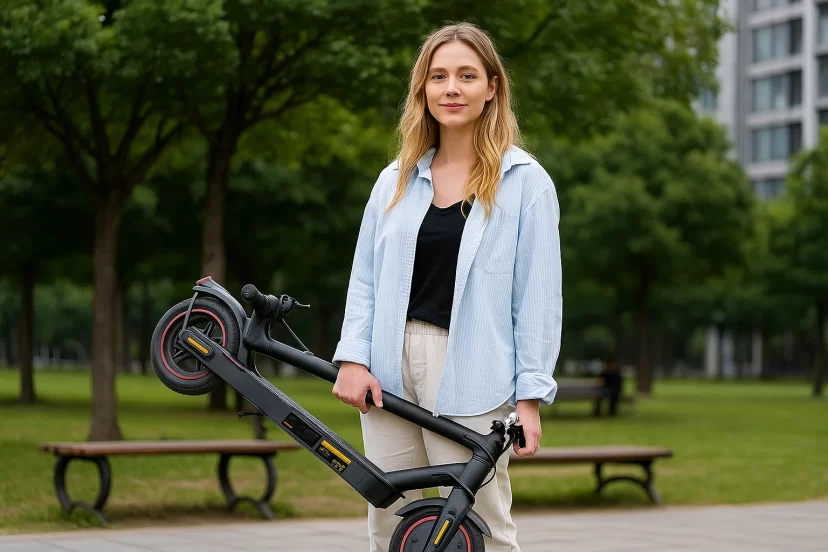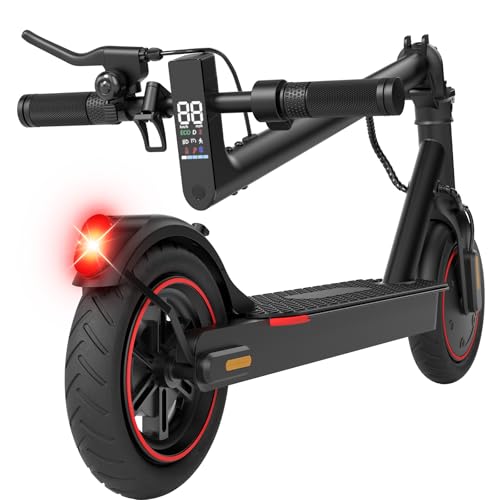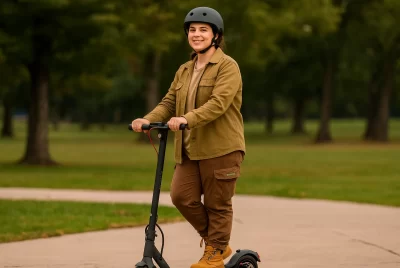HopCycle Electric Scooter: Complete Guide
*We may earn a commission for purchases made using our links. Please see our disclosure to learn more.
The morning commute had become unbearable. Sitting in traffic for an hour each way, burning fuel, feeling stressed before even arriving at work—something had to change. The search for a better transportation solution led to discovering the world of electric scooters, and more specifically, the HopCycle Electric Scooter. What started as a simple desire to avoid traffic transformed into a complete reimagining of urban mobility and daily wellness.
“The transition to electric micro-mobility isn’t just about changing how we move—it’s about reimagining our relationship with urban spaces and reclaiming the joy of getting from place to place.”
— Urban Transportation Research Institute
Key Takeaways
- The HopCycle Electric Scooter offers a practical alternative to traditional commuting, reducing stress and saving time
- Electric scooters provide environmental benefits while delivering personal freedom and flexibility
- Understanding key features like battery life, weight capacity, and portability helps in making informed decisions
- Safety considerations and local regulations are essential for responsible electric scooter use
- The transition to electric scooter commuting can positively impact multiple areas of life beyond just transportation
HopCycle Electric Scooter
The HopCycle Electric Scooter is designed for adults and teens seeking a reliable, powerful, and portable urban commuting solution. Equipped with a 500W peak motor, this scooter reaches speeds of up to 18 MPH, making it ideal for daily commutes, errands, or leisurely rides around the city. Its long-lasting battery offers up to 21 miles per charge, ensuring you can travel farther without worry. Featuring dual braking systems, ultra-bright LED headlights, and rear warning lights, safety is always a priority, even at night. The 8.5-inch pneumatic tires provide excellent shock absorption and traction, while its IPX4 water-resistant design makes it durable in light rain or splashes. With a one-step folding mechanism, carrying and storing the HopCycle Electric Scooter is effortless, making it perfect for apartments, subways, offices, or car trunks. UL2272 certification ensures safety, and round-the-clock customer support provides peace of mind.
The HopCycle Electric Scooter is a top choice for anyone looking for a compact yet powerful electric scooter. Designed for teens and adults, it features a 500W motor capable of speeds up to 18 MPH and a battery that lasts up to 21 miles on a single charge. Its dual braking system and bright LED lights ensure safety on all rides, while 8.5-inch pneumatic tires provide smooth handling and grip on city streets. The scooter folds quickly for easy storage or carrying, making it perfect for urban commuting, school runs, or weekend adventures. UL2272 certification guarantees electrical safety, and HopCycle’s 24/7 customer support adds peace of mind. Whether for commuting or leisure, the HopCycle Electric Scooter offers a convenient, safe, and fun ride.
- Speed: Reaches up to 18 MPH for fast and efficient commuting
- Portability: One-step folding design for easy storage and transport
- Safety: Dual electronic and disc brakes with LED lighting for night visibility
- Weight Limit: Supports up to 220 lbs, may not suit heavier riders
- Battery Life: 21-mile range may require charging for longer trips
- Tires: 8.5-inch plastic wheels may not handle very rough terrain
The Emotional Journey Into Electric Mobility
The decision to explore electric scooters wasn’t made overnight. There was skepticism at first—could something so compact really replace a car for daily commutes? Would it be safe? Would it handle the varied terrain of city streets? These questions swirled endlessly, creating hesitation and doubt.
Yet the pull toward a simpler, more efficient way of moving through the city grew stronger. The HopCycle Electric Scooter emerged as a solution that addressed both practical needs and emotional desires for independence. The first ride brought an unexpected rush of freedom—gliding through streets, feeling the breeze, and arriving at destinations without the anxiety of finding parking or sitting in gridlock.
Understanding the HopCycle Electric Scooter Experience
Power and Performance That Transforms Daily Travel
The technical specifications of an electric scooter matter, but they only tell part of the story. The HopCycle Electric Scooter typically features a robust motor that can handle various inclines and terrain types. Most models provide speeds ranging from 15 to 25 mph, which strikes the perfect balance between efficiency and safety for urban environments.
Battery life became a crucial consideration during the research phase. The anxiety of running out of power mid-commute is real, but modern electric scooters have addressed this concern. Many HopCycle models offer ranges between 15 to 30 miles on a single charge, depending on rider weight, terrain, and speed settings. This range comfortably covers most daily commutes with power to spare.
The emotional relief of knowing the scooter would reliably get from point A to point B cannot be overstated. No more checking fuel gauges or worrying about gas station stops during rushed mornings. Simply plug in overnight, and wake up to a fully charged vehicle ready for the day ahead.
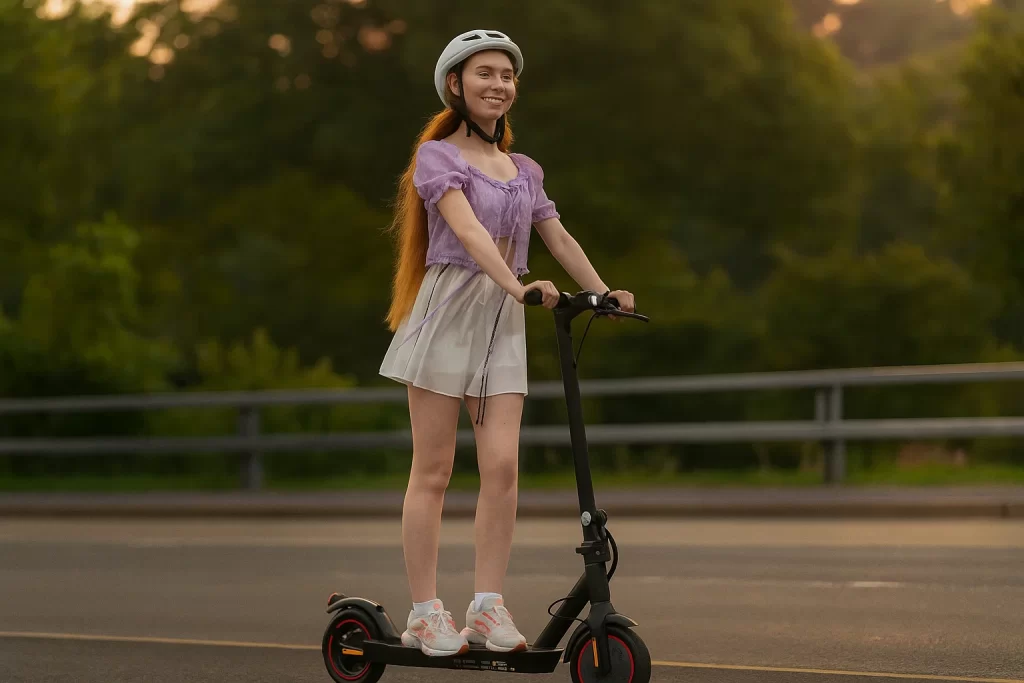
Design Features That Matter in Real-World Use
Portability emerged as an unexpected game-changer. The HopCycle Electric Scooter’s foldable design means it can transition seamlessly between different transportation modes. Taking it on public transit for part of a journey, storing it under a desk at work, or tucking it away in a small apartment—these practical considerations make electric scooters viable for real-world urban living.
Weight capacity is another critical factor that directly impacts user experience. Understanding that most electric scooters support riders between 220 to 280 pounds helps set realistic expectations. The HopCycle Electric Scooter is designed to accommodate a range of body types while maintaining stability and performance.
Suspension systems might seem like a minor detail, but they dramatically affect ride quality. Navigating city streets means encountering potholes, uneven pavement, and various obstacles. A good suspension system absorbs these impacts, transforming what could be a jarring experience into a smooth, comfortable ride.
Overcoming Common Challenges and Misconceptions
Weather and Environmental Concerns
One of the first obstacles faced was weather anxiety. What happens when it rains? Can the HopCycle Electric Scooter handle wet conditions? While most electric scooters have some water resistance (typically IP54 or IP55 ratings), they aren’t designed for heavy rain or water submersion.
Learning to check weather forecasts became part of the routine. On rainy days, having a backup transportation plan proved essential. Some riders invested in waterproof covers and protective gear, while others simply chose alternative transportation on inclement days. This flexibility became part of the journey rather than a limitation.
Temperature extremes also affect battery performance. Cold weather can reduce range by 10-20%, while excessive heat can impact battery longevity. Understanding these limitations helped set realistic expectations and plan accordingly.
Safety Concerns and Learning Curves
The initial rides brought a mix of exhilaration and nervousness. Balancing on two wheels while navigating traffic requires awareness and practice. Starting in quiet areas, away from heavy traffic, allowed for building confidence gradually.
Investing in proper safety gear transformed the experience from anxiety-inducing to empowering. A quality helmet, knee pads, and reflective clothing became non-negotiable items. The peace of mind they provided made every ride more enjoyable.
Learning to anticipate road hazards developed over time. Watching for car doors opening, noticing pedestrians stepping off curbs, identifying patches of gravel or wet leaves—these skills became second nature through consistent practice.
Storage and Maintenance Realities
Finding appropriate storage space initially seemed challenging, especially in a small living space. However, the compact nature of the folded HopCycle Electric Scooter proved surprisingly accommodating. It fit in closets, under beds, and in corners without dominating the space.
Maintenance concerns loomed large at first. Would it require constant repairs? Would parts be expensive or hard to find? The reality proved far less daunting. Regular maintenance involves checking tire pressure, ensuring bolts are tight, and keeping the scooter clean—simple tasks that take minutes.
Battery care became the most important maintenance consideration. Learning to avoid completely draining the battery, storing it at moderate temperatures, and not leaving it fully charged for extended periods helped maximize battery lifespan.
The Broader Impact on Lifestyle and Wellbeing
Financial Freedom and Environmental Consciousness
The cost savings became apparent quickly. No more gas expenses, reduced car insurance costs (for those who could eliminate a vehicle entirely), and minimal maintenance expenses added up significantly over months and years. The HopCycle Electric Scooter proved to be an investment that paid dividends in multiple ways.
Beyond personal finances, the environmental impact provided a sense of contribution to something larger. Each commute on an electric scooter rather than in a car meant reduced carbon emissions. This awareness brought unexpected satisfaction and alignment with personal values.
Physical and Mental Health Benefits
An unanticipated benefit was the increase in outdoor time. Rather than sitting in enclosed cars or crowded transit, every commute became an opportunity to experience the environment—noticing seasonal changes, feeling weather patterns, and engaging with the surroundings in a more present way.
The stress reduction proved transformative. Arriving at work without the tension of traffic battles changed the entire energy of the day. Similarly, the evening commute became a decompression ritual rather than an extension of workplace stress.
Core strength and balance improved subtly but noticeably. While riding an electric scooter isn’t intensive exercise, it engages stabilizing muscles and requires active balance, providing low-impact physical benefits.
Social Connections and Community
Joining the electric scooter community opened unexpected social opportunities. Online forums, local riding groups, and casual conversations with other riders created connections based on shared experiences and interests.
These interactions provided valuable information sharing—recommendations for routes, tips for dealing with local regulations, and advice on maintenance or upgrades. The community aspect transformed what could have been a solitary transportation choice into a gateway for social engagement.
Practical Guidance for Different Situations
Urban Commuting Strategies
Developing reliable routes took experimentation. Main roads offered directness but came with heavy traffic and stress. Side streets provided calmer rides but sometimes added time. Finding the right balance between efficiency and enjoyment became an ongoing optimization process.
Learning local regulations proved essential. Some cities have designated scooter lanes, speed limits, or restrictions on where scooters can be ridden or parked. Taking time to understand these rules prevented tickets and ensured responsible riding.
Timing commutes to avoid peak traffic when possible made rides more pleasant. Leaving fifteen minutes earlier meant quieter streets and a more relaxed journey, setting a positive tone for the entire day.
Multi-Modal Transportation Integration
The HopCycle Electric Scooter excels as part of a larger transportation strategy. Using it to reach transit stations, combining it with bus or train rides for longer distances, or keeping it as a last-mile solution for various trips maximized its utility.
Planning became more creative and flexible. Rather than being limited to routes served by single transportation methods, the scooter opened up possibilities for combining different modes based on distance, weather, and schedule.
Recreational and Social Uses
Beyond commuting, the electric scooter became a tool for exploration and leisure. Discovering new neighborhoods, visiting nearby parks, or meeting friends at local venues became more spontaneous and enjoyable. The HopCycle Electric Scooter transformed from a utilitarian device into an enabler of experiences.
Group rides with friends or family created shared adventures. Exploring scenic routes, finding new coffee shops, or simply enjoying an evening cruise became regular activities that combined social connection with mild physical activity.
Evaluating Features and Priorities
When first researching electric scooters, the array of options felt overwhelming. Premium models with advanced features competed for attention against budget-friendly basic options. The key was identifying personal priorities.
Choosing a scooter for daily commuting, reliability and range mattered most. Considering occasional recreational use, portability and weight might be primary concerns. Riding on varied terrain, suspension and motor power became critical. Assessing personal needs helped cut through marketing hype to find the right fit.
Reading reviews from actual users provided invaluable insights. Real-world experiences often highlighted issues or benefits that specifications couldn’t capture. Learning from others’ mistakes and successes shortened the learning curve significantly.
Budget Considerations and Value Assessment
The initial cost of an electric scooter can seem significant, but comparing it to ongoing transportation expenses provides perspective. Calculate monthly gas, parking, insurance, and maintenance costs for cars, or monthly transit passes, to understand the potential savings.
Quality matters in electric scooters. Extremely cheap models often come with reliability issues, safety concerns, and short lifespans. Finding the middle ground—reasonably priced models from reputable manufacturers—often provides the best long-term value.
Consider warranty and customer support when making purchase decisions. Companies that stand behind their products with solid warranties and responsive customer service provide peace of mind worth paying slightly more to obtain.
Addressing Doubts and Building Confidence
Overcoming Initial Skepticism
The skepticism about whether an electric scooter could truly replace traditional transportation was strong initially. Concerns about safety, reliability, and practicality created resistance to making the change.
Starting small helped overcome these doubts. Using the scooter for short, familiar trips first built confidence gradually. Each successful journey reinforced the viability of electric scooters as legitimate transportation.
Connecting with others who had made similar transitions provided reassurance. Hearing their stories, learning their solutions to common problems, and understanding that challenges were normal and surmountable made the adjustment easier.
Dealing with External Judgment
Not everyone understands or supports alternative transportation choices. Dealing with comments from friends, family, or coworkers who viewed electric scooters as toys rather than legitimate vehicles required developing confidence in personal decisions.
Leading by example proved more effective than arguing. Demonstrating reliability—consistently arriving on time, handling various weather conditions competently, and maintaining enthusiasm over time—gradually shifted skeptics’ perspectives.
Finding supportive communities, both online and locally, provided reinforcement when facing external doubts. Being part of a group that validated the choice made individual challenges feel less isolating.
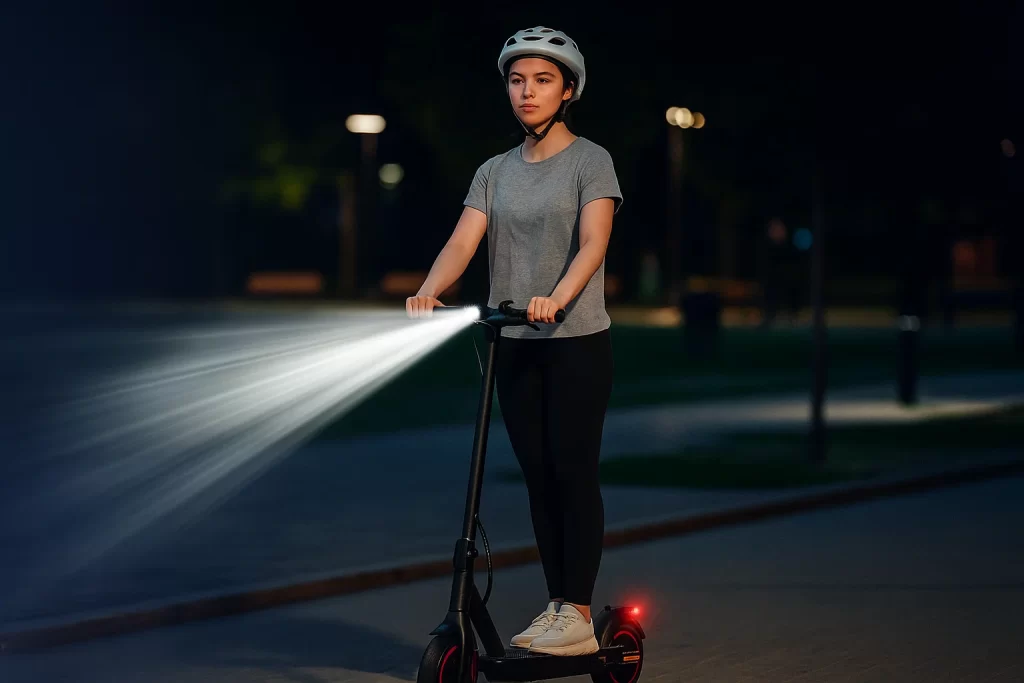
The Evolution of Electric Scooter Integration
Adapting to Seasonal Changes
The relationship with the HopCycle Electric Scooter evolved through different seasons. Summer brought ideal riding conditions and maximum enjoyment. Fall required adjusting to earlier darkness and changing weather. Winter presented the biggest challenges, requiring the most significant adaptations or alternative transportation arrangements.
Developing seasonal strategies maintained consistency. Investing in cold-weather gear extended the riding season. Having backup transportation plans for extreme weather prevented disruption. This flexibility became part of the rhythm of electric scooter ownership.
Spring brought renewed energy and appreciation after winter limitations. The cycle of seasons added variety and prevented monotony, keeping the experience fresh and engaging.
Ongoing Learning and Optimization
The journey with electric scooters proved to be continually evolving. New routes were discovered, efficiency strategies refined, and comfort optimizations implemented over time. This ongoing learning process kept the experience dynamic rather than routine.
Staying informed about technological advances and new models maintained awareness of options. While not every new feature or model warranted an upgrade, understanding the landscape helped make informed decisions about potential improvements.
Sharing accumulated knowledge with newcomers to electric scooters created opportunities to contribute to the community that had provided so much support during the initial learning phase.
Looking Toward the Future
Expanding Possibilities and Aspirations
The success with the HopCycle Electric Scooter opened thinking to other alternative transportation options. Observing the growth of electric bikes, improved public transit, and evolving urban infrastructure created optimism about future mobility possibilities.
Imagining a future where electric scooters become more integrated into city planning—dedicated lanes, charging stations, secure parking—fueled enthusiasm for continued adoption and advocacy.
Personal aspirations evolved beyond just commuting. Considering longer recreational trips, participating in organized rides, or even advocating for better infrastructure became new goals inspired by the positive electric scooter experience.
The Continuing Journey
The relationship with electric scooter transportation remains imperfect and evolving. Challenges still arise—mechanical issues occasionally occur, weather sometimes forces plan changes, and navigation problems still happen. Acknowledging this reality keeps expectations grounded.
Yet the overall transformation remains profoundly positive. The HopCycle Electric Scooter changed not just transportation methods, but perspectives on urban mobility, environmental responsibility, and personal freedom. The journey continues, with each ride reinforcing the decision to embrace this alternative way of moving through the world.
Conclusion: Embracing Your Own Electric Mobility Journey
The path from traditional transportation to electric scooter commuting isn’t always smooth or straightforward. It requires research, investment, adaptation, and persistence through challenges. Yet for those seeking an alternative that offers freedom, efficiency, and environmental consciousness, the rewards can be transformative.
The HopCycle Electric Scooter represents more than just a vehicle—it symbolizes a choice to engage differently with urban environments, to prioritize sustainability, and to reclaim time and mental space from stressful commutes. Whether seeking to reduce transportation costs, minimize environmental impact, or simply find more joy in daily travel, electric scooters offer viable solutions.
For anyone considering this transition, start small. Research thoroughly, invest wisely, prioritize safety, and give yourself grace during the learning process. Connect with communities that can provide support and guidance. Remember that the journey is individual—what works for one person may need adaptation for another.
The transformation from skeptical observer to confident electric scooter rider creates ripple effects beyond transportation. It builds confidence in making unconventional choices, demonstrates that viable alternatives to traditional methods exist, and often inspires others to explore their own paths toward more intentional, sustainable living.
Every journey begins with a single decision. For those feeling the pull toward electric mobility, that decision might just start with exploring what the HopCycle Electric Scooter and similar options could offer. The road ahead is open, the possibilities are expanding, and the community is welcoming. The only question remaining is: are you ready to begin your own journey toward electric mobility freedom?
Frequently Asked Questions
Q: How long does it take to charge a HopCycle Electric Scooter?
A: Most electric scooters, including HopCycle models, take between 4 to 8 hours for a full charge from empty. Charging times vary based on battery capacity and charger specifications. Many users charge overnight, ensuring a full battery each morning. Some newer models offer fast-charging options that can reach 80% capacity in 2-3 hours, though this may impact long-term battery health.
Q: What is the typical range of a HopCycle Electric Scooter on a single charge?
A: Range varies significantly based on multiple factors including rider weight, terrain, speed, temperature, and riding style. Most HopCycle Electric Scooters provide between 15 to 30 miles per charge under normal conditions. Riding at maximum speed, traveling uphill frequently, or carrying heavy loads will reduce range. Many riders find that their actual daily commute requires only 40-60% of total battery capacity, providing a comfortable safety margin.
Q: Are electric scooters legal to ride on public roads and sidewalks?
A: Regulations vary significantly by location. Some cities allow electric scooters on roads, bike lanes, and certain sidewalks, while others restrict them to specific areas or prohibit them entirely. Speed limits, helmet requirements, age restrictions, and registration rules also vary. Research local laws before riding, as violations can result in fines. Many jurisdictions are actively developing electric scooter regulations, so staying informed about changing rules is important.
Q: How much maintenance does a HopCycle Electric Scooter require?
A: Electric scooters require relatively minimal maintenance compared to cars or motorcycles. Regular tasks include checking tire pressure weekly, ensuring bolts and connections remain tight, cleaning the scooter to prevent dirt buildup, and inspecting brakes for proper function. Battery care is critical—avoid completely draining it, store at moderate temperatures, and don’t leave it fully charged for extended periods. Most riders spend just 10-15 minutes monthly on basic maintenance.
Q: Is riding an electric scooter safe, and what safety equipment is recommended?
A: Safety depends largely on rider behavior, equipment quality, and environmental awareness. Essential safety gear includes a certified helmet (critical for every ride), knee and elbow pads (especially for beginners), reflective clothing or lights for visibility, and appropriate footwear with good grip. Learning to ride in low-traffic areas first, staying alert to road conditions, following traffic laws, and avoiding distractions significantly improve safety. While risks exist, responsible riding with proper equipment makes electric scooters a reasonably safe transportation option.

